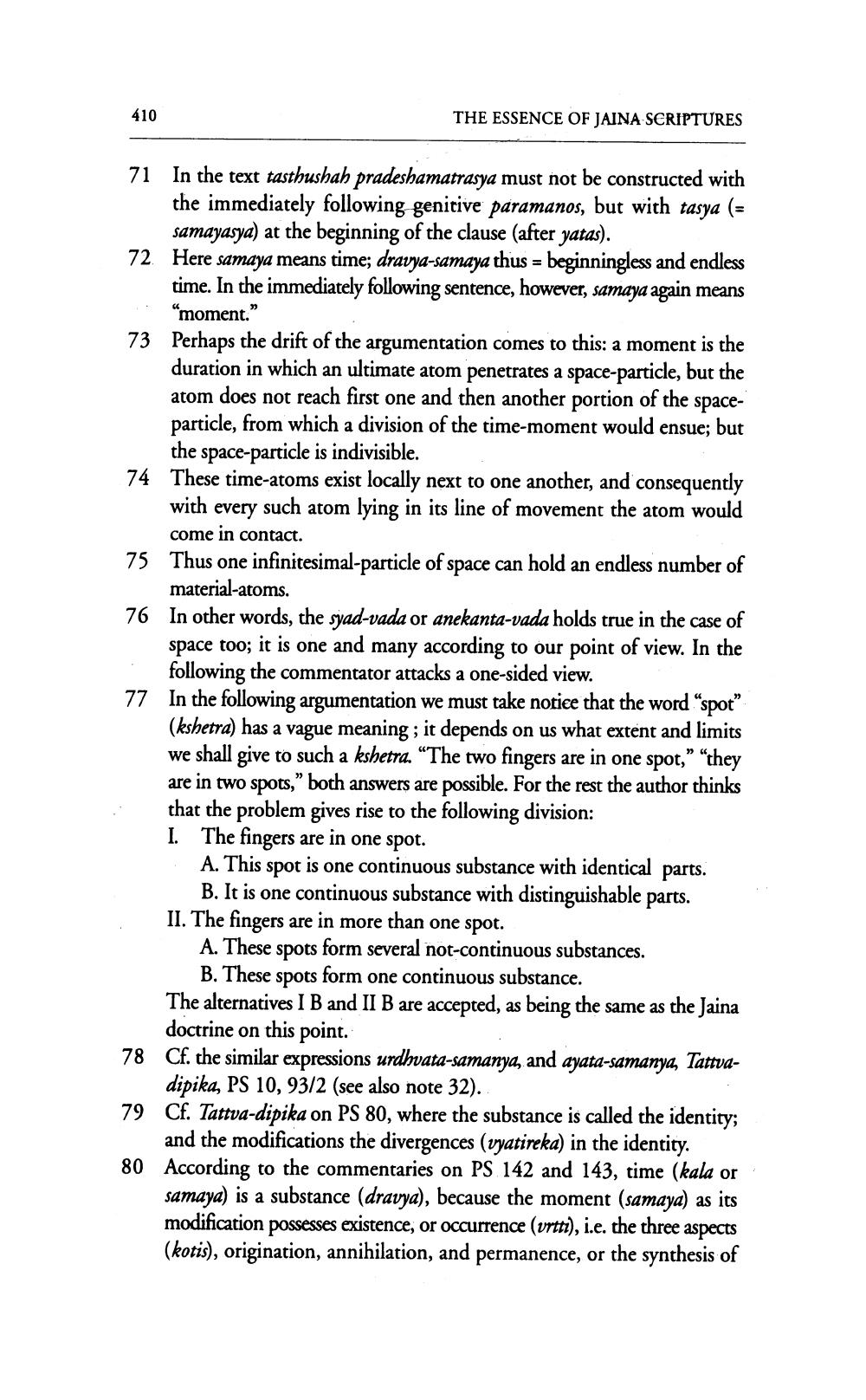________________
410
THE ESSENCE OF JAINA SCRIPTURES
71 In the text tasthushah pradeshamatrasya must not be constructed with
the immediately following genitive paramanos, but with tasya (=
samayasya) at the beginning of the clause (after yatas). 72. Here samaya means time; dravya-samaya thus = beginningless and endless
time. In the immediately following sentence, however, samaya again means
“moment." 73 Perhaps the drift of the argumentation comes to this: a moment is the
duration in which an ultimate atom penetrates a space-particle, but the atom does not reach first one and then another portion of the spaceparticle, from which a division of the time-moment would ensue; but
the space-particle is indivisible. 74 These time-atoms exist locally next to one another, and consequently
with every such atom lying in its line of movement the atom would
come in contact. 75 Thus one infinitesimal-particle of space can hold an endless number of
material-atoms. 76 In other words, the syad-vada or anekanta-vada holds true in the case of
space too; it is one and many according to our point of view. In the
following the commentator attacks a one-sided view. 77 In the following argumentation we must take notice that the word "spot”
(kshetra) has a vague meaning ; it depends on us what extent and limits we shall give to such a kshetra. “The two fingers are in one spot,” “they are in two spots," both answers are possible. For the rest the author thinks that the problem gives rise to the following division: I. The fingers are in one spot.
A. This spot is one continuous substance with identical parts.
B. It is one continuous substance with distinguishable parts. II. The fingers are in more than one spot.
A. These spots form several not-continuous substances.
B. These spots form one continuous substance The alternatives I B and II B are accepted, as being the same as the Jaina
doctrine on this point. 78 Cf. the similar expressions urdhvata-samanya, and ayata-samanya, Tattva
dipika, PS 10, 93/2 (see also note 32). 79 Cf. Tattva-dipika on PS 80, where the substance is called the identity;
and the modifications the divergences (vyatireka) in the identity. 80 According to the commentaries on PS 142 and 143, time (kala or
samaya) is a substance (dravya), because the moment (samaya) as its modification possesses existence, or occurrence (urtti), i.e. the three aspects (kotis), origination, annihilation, and permanence, or the synthesis of




